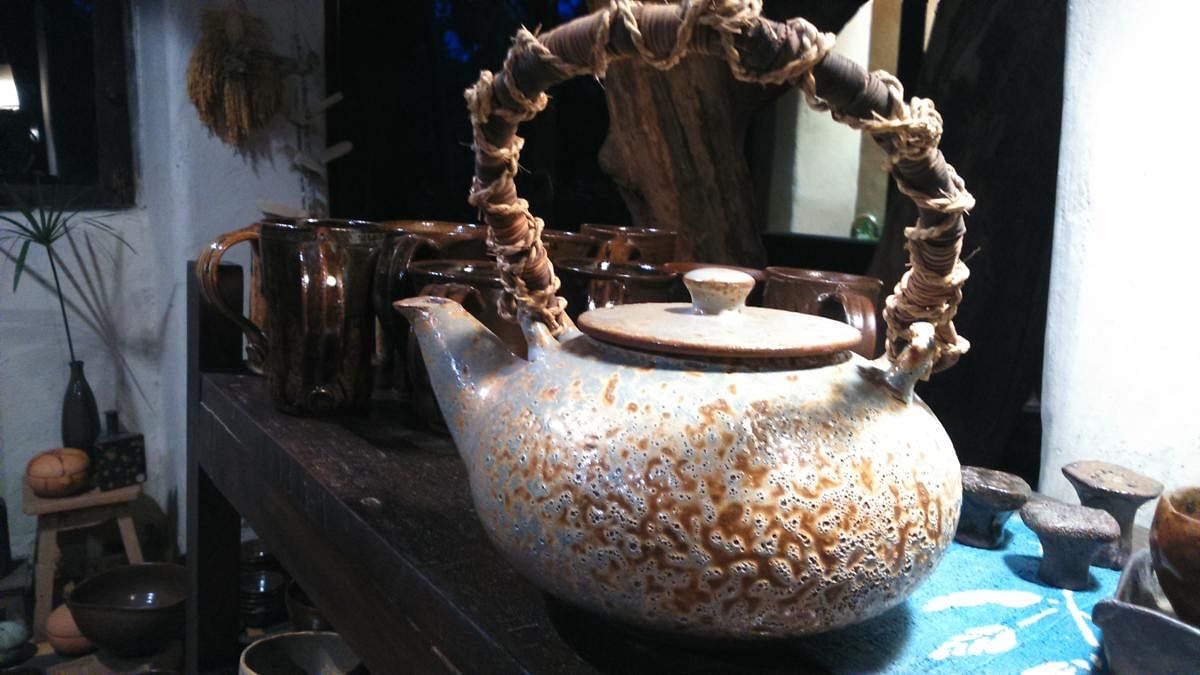
Her rendezvous with pottery began following a brief interlude with a woman kulhad seller at a street corner near her home on the outskirts of Bolpur, in the vicinity of Shantiniketan. This was also a time when Lipi Biswas, a Fine Arts graduate from Maharaja Sayajirao University of Vadodara, was seeking a separate identity and a different way of expressing herself. “That woman was my first teacher of pottery,’’ recalls Lipi, possibly India’s only pinch-clay studio potter. Simply put, pinch-clay pottery is ‘pinching’ clay to achieve the shape desired.
Lipi loves nature and doesn’t like to violate it, or disturb her neighbouring tribal community. The village where she lives with her husband Bidyut Roy, an artist turned self-taught architect of sustainable homes and their teenage daughter, is dominated by the Santhal tribe, who like other tribes, live in harmony with nature. Gurudev Rabindranath Tagore had a fondness for this community as Shantiniketan is dotted with their hamlets and several of them have studied in Viswa Bharati, located on its premises. A handful of them work as artisans in Lipi’s studio, interestingly named, Boner Pukur-Danga (between the forest and the pond).
“For generations, they have been following the pinch-clay method to make everyday utilitarian pottery. I didn’t want to change their tradition by teaching them wheel pottery,” explains the artist-potter, who lives in a one-storey mud and bamboo house built by the couple.
Only natural materials
It was on the suggestion of the kulhad seller that Lipi joined a course in advanced pottery studies at Viswa Bharati, but soon realised that she wanted to learn more. Incidentally, it was around this time that Bidyut got an assignment to build a sustainable home in Spain and the duo went country-hopping in Europe and Thailand for Lipi to learn the glazing technique. Once back in India, she visited a couple of other pottery studios in Pondicherry, Pune and Delhi to master the nuances of the art.
With three gas kilns in her studio, and seven Santhal tribals as helpers, Lipi crafts her pottery by using only natural and indigenous materials. For example, leaving her home as early as four in the morning, Lipi armed with a spade and a cloth bag, seeks out sites to mine clay. “Here in the eastern part of the country, the sun rises very early,” she smiles.
“Actually, I am the community cleaner,” admits Lipi with a laugh. Adhering to her penchant for using only natural products, she goes around the village collecting fruit peels and rice hull to burn and get the ash for glazing. Ash of different fruit peels render diverse hues to her pottery as every fruit is enriched with a different organic chemical.
Elaborating on her art, the potter adds that her studio also creates wheel pottery and sometimes, chemicals are used for glazing.
She specialises in making utilitarian pottery; her colourful teapots, drinking glasses, spoons and dining plates are much sought after. Lipi’s potteryware is solely available in her studio, which is a must-see on the itinerary of every Shantiniketan visitor. Do a Google search for Shantiniketan pottery and it’s Boner Pukur- Danga, which pops up.
“We also accept online orders. Most buyers prefer pinch-clay pottery even though it is pricier than wheel-pottery products,” signs off Lipi Biswas.